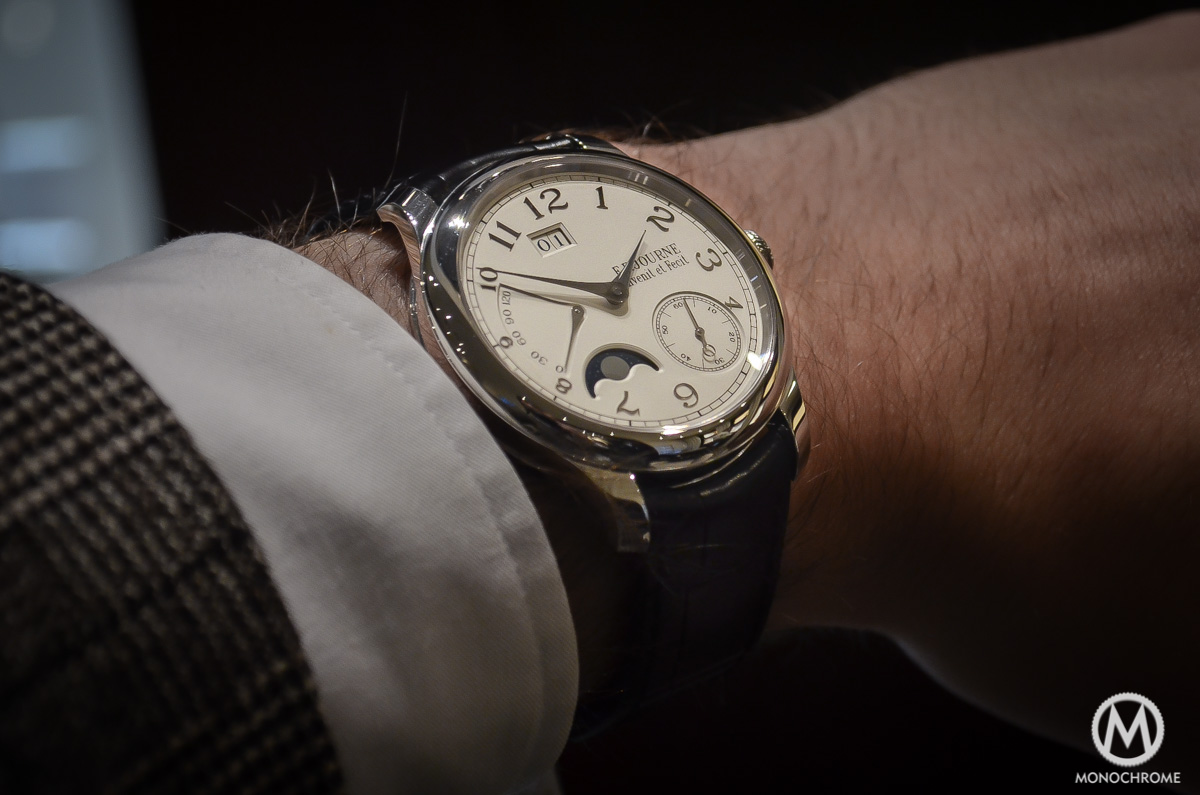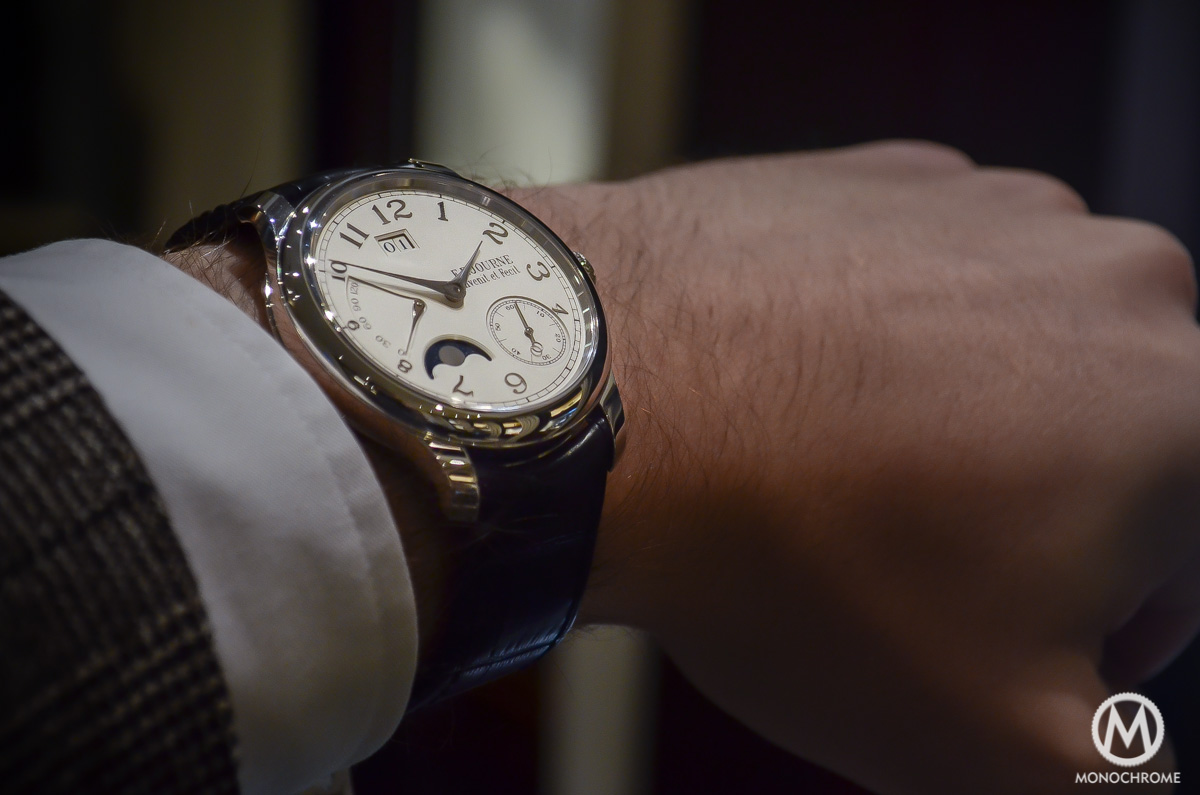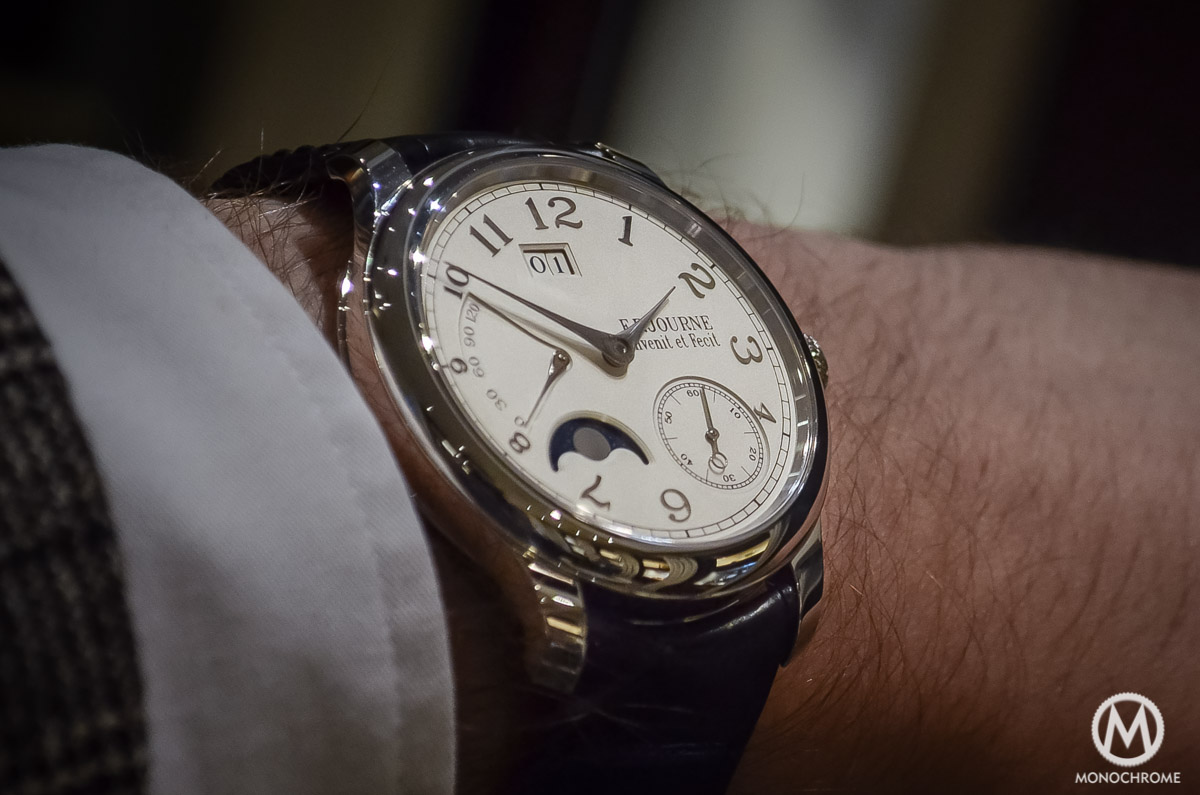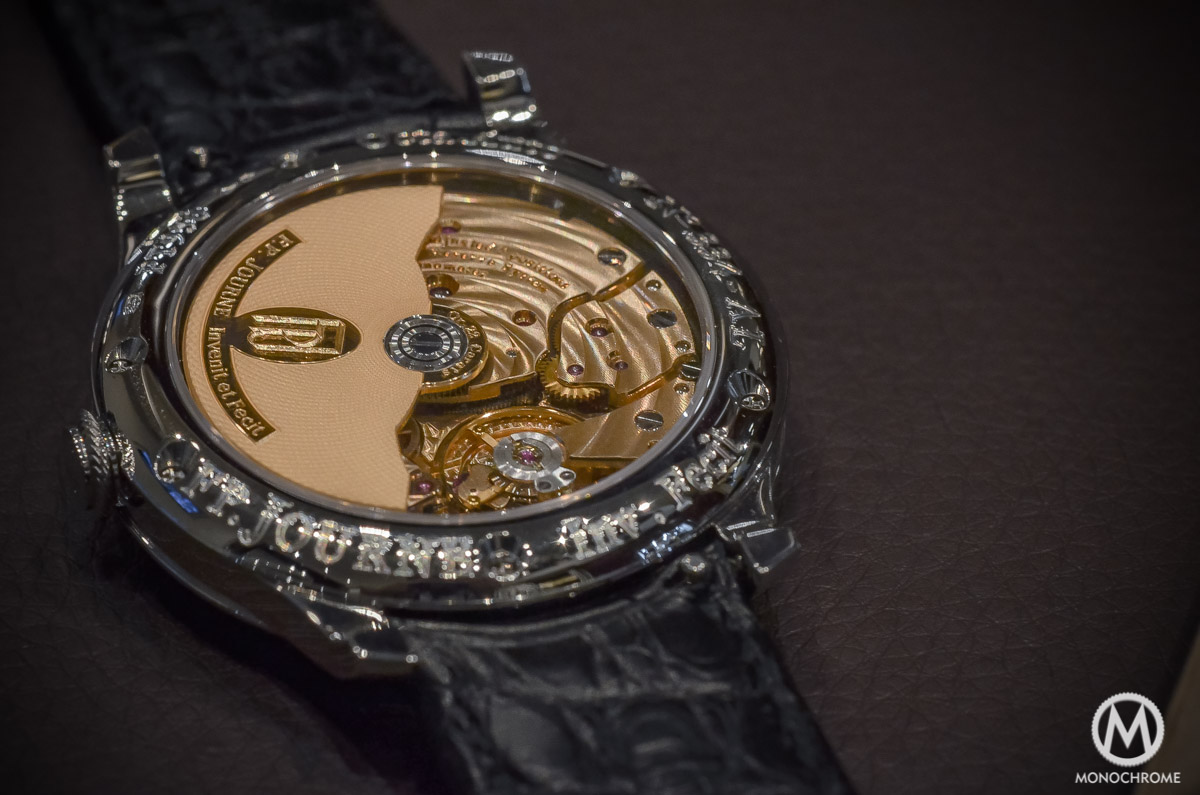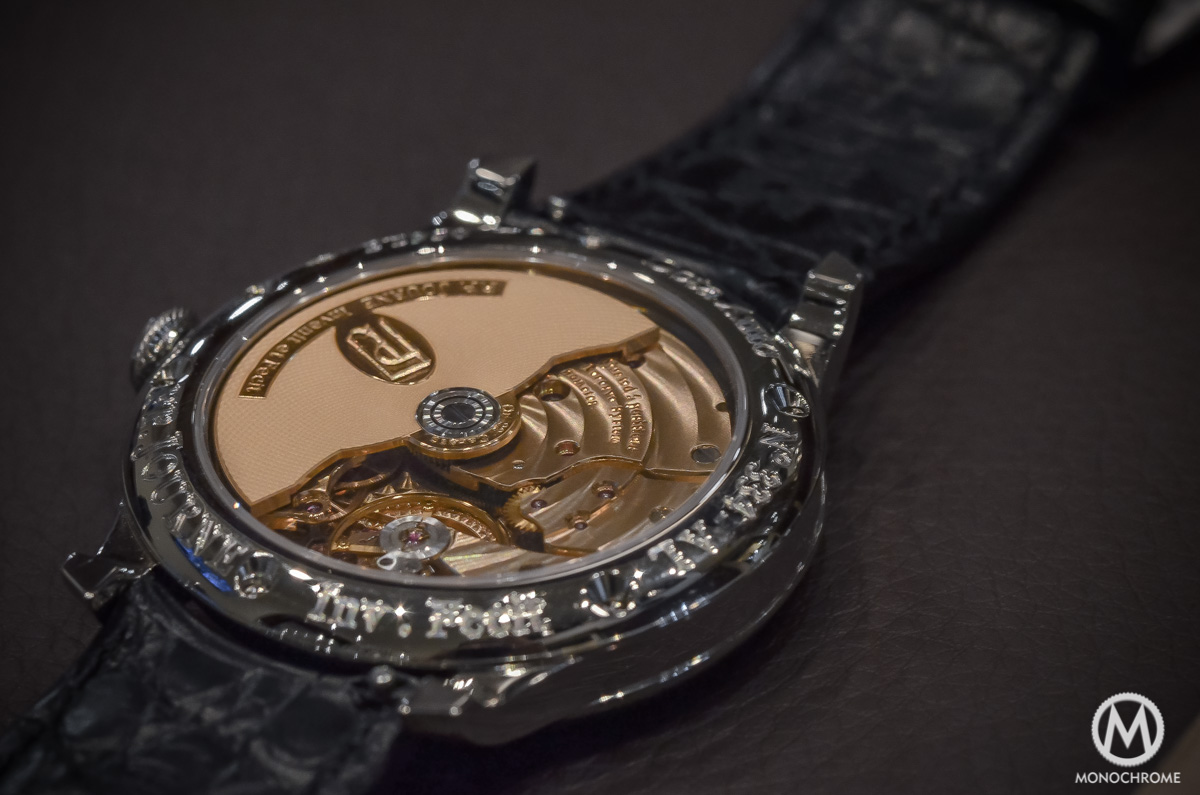Hands-on with the F.P. Journe Octa Automatique Lune (live photos, specs & price)
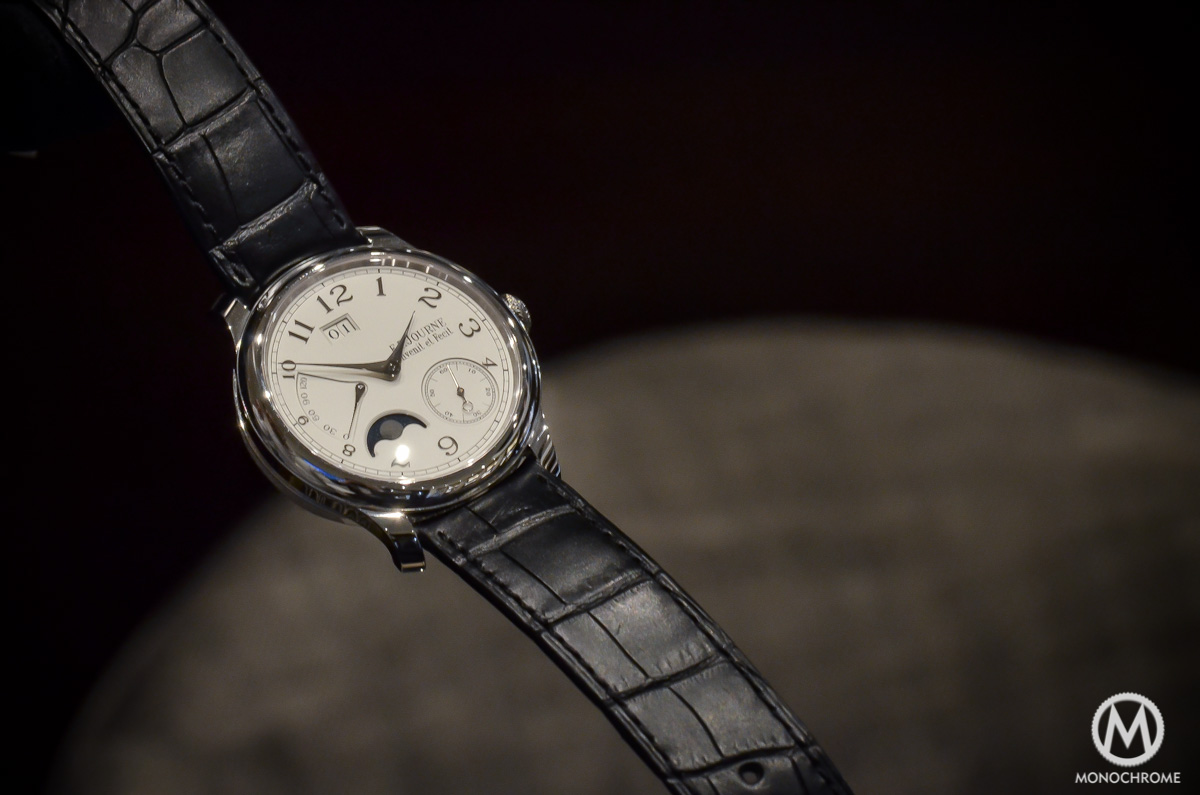
When we talk about talented watchmakers, we just have to mention François-Paul Journe. Although not too many people are familiar with this man and his brand, he made multiple special (pocket)watches that are from great importance to the current watch industry. First, lets have a look at the horological history of Journe and then moving to the F.P. Journe Octa Automatique Lune, to explain why the watch we are having a look at today is something special.
Historical background of François-Paul Journe
After François-Paul Journe just graduated from watch making school in 1976, he worked for eight years with his uncle in Paris, where he restored antique watches. It was at this time that Journe heard about a very special complication, which is known as the tourbillon. Throughout the nineteenth century, this complication was featured in pocket watches. However, during the 1970s and 1980s, this complication was rare (not to say that almost no tourbillon was produced anymore). François-Paul Journe had a special thing with this complication and wanted to have one himself (with not enough money to buy one). Ambitious as he was, he decided to make a tourbillon all by himself.
In 1977 (Journe was only 18), he started making a pocket watch with a tourbillon regulator. He spent all his free time making this watch. It took him five years to complete it. François-Paul Journe made every component all by himself, as well as the case. At this time, the watches he made were signed with “FP Journe à Paris”.
Then, in 1982, when Joune was still working with his uncle, there was a clock given by the Musée des Arts et Métiers in Paris to him and his uncle that had to be repaired. This clock was a double regulator that had been made by Breguet. He found out that the clock was a very particular kind of clock. It was a resonance regulator. Journe was enthusiastic about this mechanism, and thus for the second watch he made on request of a collector, he suggested a so-called resonance pocket chronometer. This watch did not turn out very well. Journe told himself that one day, he would re-do the watch – and he did it, in 2000, with the Chronomètre à Resonance.
In 1989, Journe moved to Switzerland and started his own movement manufacture. The idea was to really create unique models. Until this moment, not a single wristwatch came out of Journe’s workshop. That changed in 1991. The first watch he made combined a tourbillon with a remontoire d’égalité (something he first implement in 1982 in a pocket watch). This watch was only a prototype. In 1999, Journe launched the F.P. Journe brand (as known to date) with a regular edition of this watch (the Tourbillon Souverain) – a watch that later won the famous Golden Hand award at the Grand Prix d’Horlogerie de Genève in 2004.
Since 1999, the collections are signed “F.P Journe –Invenit et Fecit”, which can be translated as “He invented and he created”. This was the beginning of Journe as a brand. Then, in the year 2000 Mr. Journe moved the workshops to the centre of Geneva where he still is located today.
The F.P. Journe Octa Automatique Lune
When we have a look at the dial of the F.P. Journe Octa Automatique Lune, we directly recognize the brand and the watch, with its nice discreet look. The complications do justice to the style of the watch. We have a big date display between 11 and 12, a power reserve indicator at 9, the moon phase at 7 and finally a small second between 4 and 5. It is no wonder that this watch has multiple complications, as the movement was originally designed in 2001 to feature multiple complications, within the same movement size for the entire Octa collection.
The dial of the F.P. Journe Octa Automatique Lune is something remarkable too, and even if all the indications are strangely positioned, it has a certain elegance and balance. It was inspired by the award winning Chronometre Souverain. And not only the design is remarkable. The way the dial was made is special too. As we described earlier here, the base of the dial is an 18k white gold plate. The gold base dial will then be sanded to perfection, before they add a specific silver layer. That silver layer is what gives the dial a lovely fine grain. The numerals are embossed, and mirror polished. The last phase is to print the rail-road minute track and the F.P. Journe logo, which requires up to 5 successive layers for a perfect bombé shape.
When we flip the F.P. Journe Octa Automatique Lune over, we can see the stunning 18k rose gold movement. Besides the fact that movement is gold (solid gold right, not plated), there is another reason why the movement is desirable. The story behind this calibre is pretty funny. Journe noticed that one of his friends’ Octa was never actually fully wound. The reason for this was because his friend was working on a computer and therefore, didn’t move his hand enough to fully wind the watch. To tackle this problem, he decided to design a new kind of rotor that will turn in one direction only to wind the watch. What is different between this movement and the previous movement is that the new edition operates with a ball-bearing system – meaning that a ceramic ball allows the rotor to turn in one direction and block it when it turns the other way. When the user does not move his hand, the rotor will go back to its original position. In this way, Mr. Journe managed to tackle the problem of a not fully wound watch. The amount of total power reserve stayed the same at a total of 120 hours (5 days).
After all the things we talked about that are very nice about the watch, there also a few things we are less happy about. The big date display does not really do justice to its name. Although it is a nice complication, it doesn’t really pop out of the dial (something you would expect from this kind of complication). Besides that, some numbers on the dial are smaller then others. This makes the dial slightly ecstatically unbalanced (this remains a personal point of view that some won’t share). Having this said, the F.P. Journe Octa Automatique Lune is a beautiful iteration and the watch captures the history and innovative spirit of François-Paul Journe perfectly. Price: 39,600 Euros in Red Gold / 46,000 Euros in platinum (the one you can see here).

